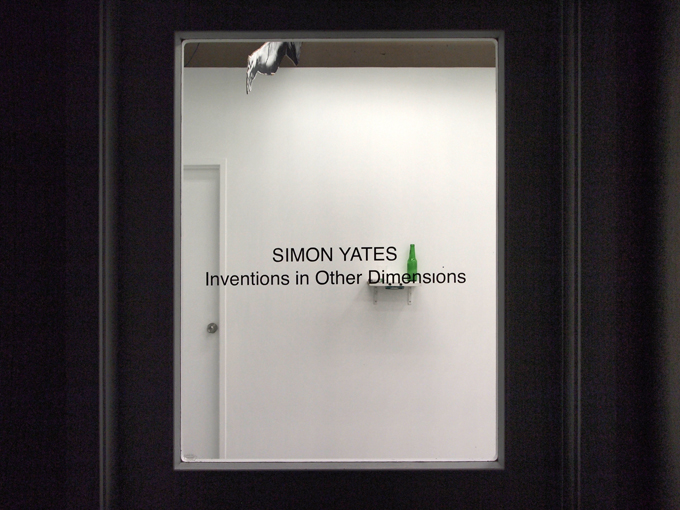
Shelf Life, 2012
I wanted to make an artwork that didn't just sit on a shelf but was actually the shelf itself. If you look through the peepholes you will see a 3D image. This is a Viewmaster image from the 1960s of some people living under a bridge in Paris. Here they are the denizens of the shelf.

Cloaking Device, 2007
I was inspired by the mysterious optical properties of the Mitchell-Hedges Crystal Skull to create this invisibility device.
It uses the magnifying power of a Fresnel screen to make a box seem empty, when really it has false walls behind which is an invisible secret space.
I created a second Cloaking Device with a hexagonal shape that can conceal an object in its centre using the same principles by expanding and then re-shrinking space around the object.
In 2009, Professor John Pendry, the world's leading authority on the subject of cloaking devices, spoke at Sydney University. After his talk, I surprised him by showed him the cloaking device I had invented, which he was quite impressed by.

Invisible Man 1, 2012
I used book covers of H.G. Wells' Invisible Man to demonstrate some optical illusions. I photocopied a section of one cover through a lenticular plastic screen to create an image that appears to match up with the surface of the cover picture.

3D Collages, 2012
When I first went to art school I cut out twin sets of pictures from National Geographic magazines and collaged them together to create stereoscopic 3D pictures viewable through a stereoscope, like the one recreated here.

2D Glasses, 2012
I wanted to make 2D glasses through which both eyes would see exactly the same image, consequently making the wearer's view seem flat. I came up with this configuration of mirrors, including a special half-silvered mirror, more usually used with lasers, for making holograms etc. This half-silvered mirror is like a two-way mirror allowing one eye to look through the mirror and the other eye to see the reflection off its surface.
The glasses aren't perfect at close range, because of the extra distance the image travels to meet the left eye but even at a few metres distance away it's possible to perceive the absence of depth between objects causing near and far objects to seem merely overlapped with no distance between them. To better illustrate this effect in the gallery I put the arms from Michelangelo's Creation of Adam, from the Sistine Chapel ceiling. The two arms are different sizes and distances away to show how the glasses affect vision by making it appear as though the hands are the same size and touching.

Wonkavision, 2011
Wonkavision is a video tape of a spinning "Wonka bar", identical to the one in the Willy Wonka and the chocolate factory movie. In the movie, the Wonka bar is transmitted by Wonkavision to appear in 3D on tv. The Wonkavision video is a development of the Pulfrich Effect. It takes the brain slightly longer to process a dimmer image. If you cover one eye with sunglasses, and not the other, and then watch a video taken of the view out the window of a train, it creates a 3D stereo effect from the 2D image because the delayed image in one eye combines with the image in the other eye to extract stereo from mono vision.
Wonkavision is innovative in the application of the Pulfrich Effect. Instead of looking outward to a landscape, it is possible to turn the effect inward, creating a 3D object spinning around on its axis. The video tape is actual video art because it is about the encoding of the 3D object onto the video tape, almost like string wound around a reel. The outdated technology of VHS is integral to the work. It is an expression of appreciation for the ingenuity of the machinery of VHS, although it is largely considered redundant now.
VHS is an invention that solved a problem: how to store moving images on a piece of magnetic tape. Cassette tapes for audio recordings were easier to make, because there is much less information in a sound recording than a moving image. If you cut up a celery or carrot you can cut straight across to make circles. This is sort of what a sound recording is like. If you cut diagonally across the carrot, you get long, oval shaped pieces of carrot with a much larger surface area. This is how the VHS tape records more information onto the tape: by recording it in long, diagonal strips.

3D Collages, 2012
When I first went to art school I cut out twin sets of pictures from National Geographic magazines and collaged them together to create stereoscopic 3D pictures viewable through a stereoscope, like the one recreated here.

Shrinking Ray, 2011
The Shrinking Ray – a magical box in which objects are made smaller – acts as a metaphor. It is a contemplative focus for thinking about current issues in our perception of technology. When Apple advertised a second generation of the iPhone as smaller than the previous one, it appeared that Apple had deceptively used an oversized hand in the advertisements. This made the iPhone appear smaller than it actually was.
There is a desirability for technological objects to become smaller, taking up less time and less space, shrinking in all dimensions. Moore’s Law has accurately predicted for forty years now that microchips will halve in size or in other words, double in efficiency, every two years. The arrival of the microchip heralded what we know as the Information Age. The devices for the reception and transmission of information - TVs, telephones and computers – are the technology that we want to be smaller, flatter and faster. At the same time, information and communication itself has become increasingly problematic, as we are inundated with more and more data. We have difficulty when it comes to effectively reorganising it, to make it easier to understand.
A psychologist is referred to as a “head-shrinker” because they unravel and shrink the patient’s problems. This is a different kind of process, one that is not so much about transmitting or receiving information with smaller devices, but about reorganising it so it is easier to understand.
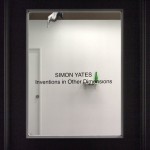
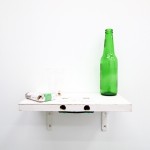
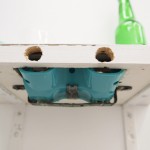
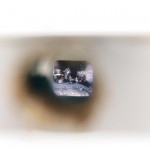
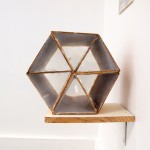
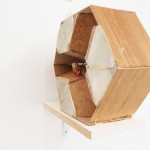
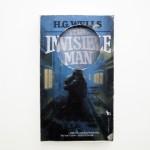
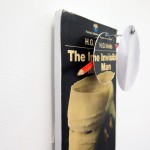
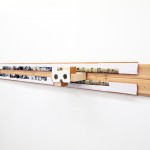
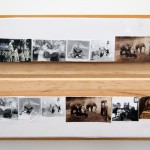
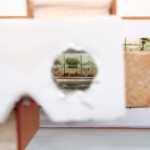
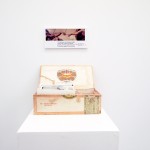
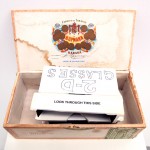
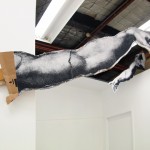
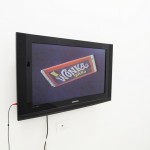
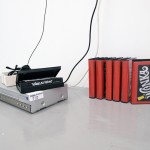
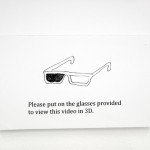
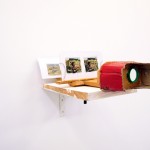
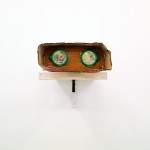
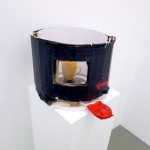
Simon Yates
15/6 – 1/7/12
